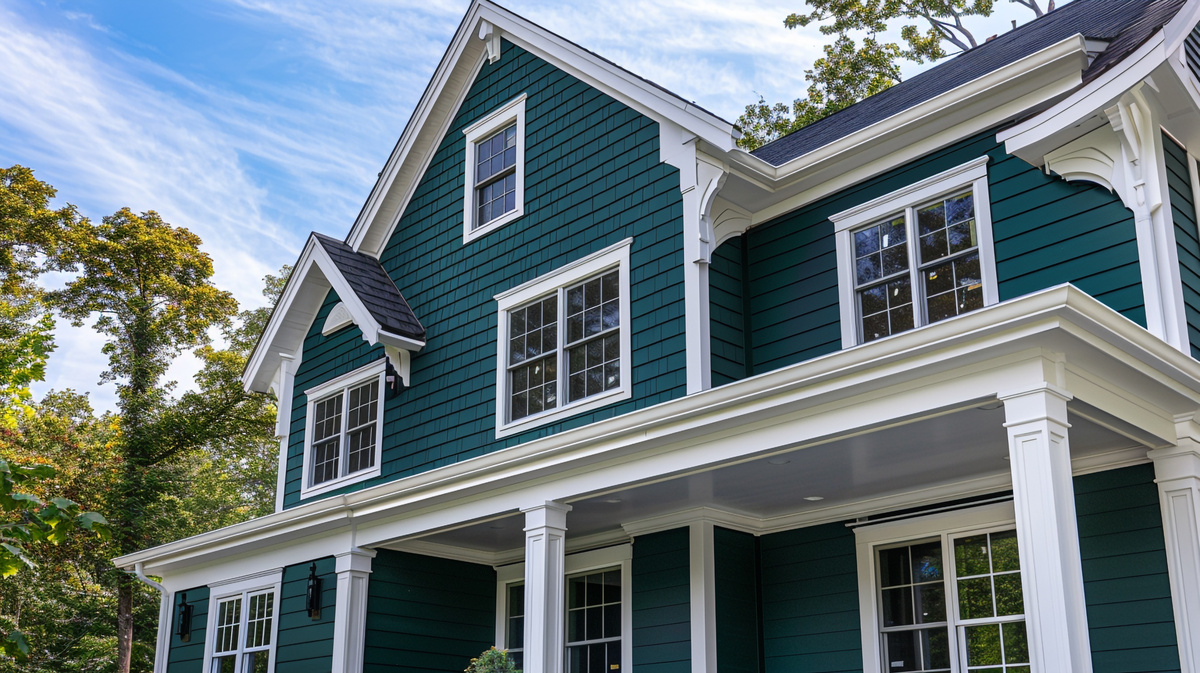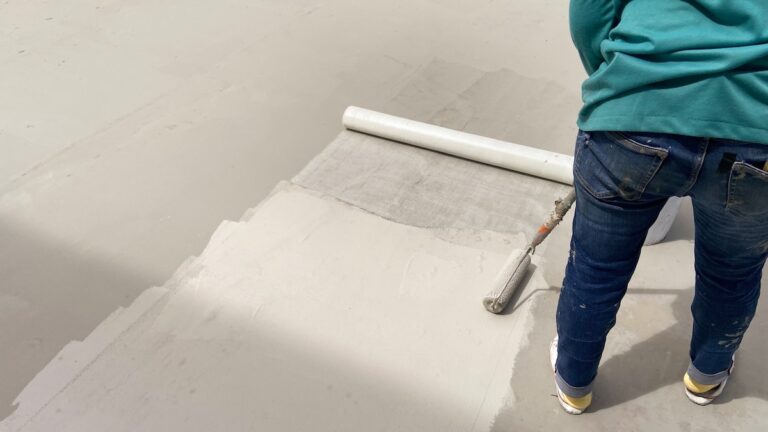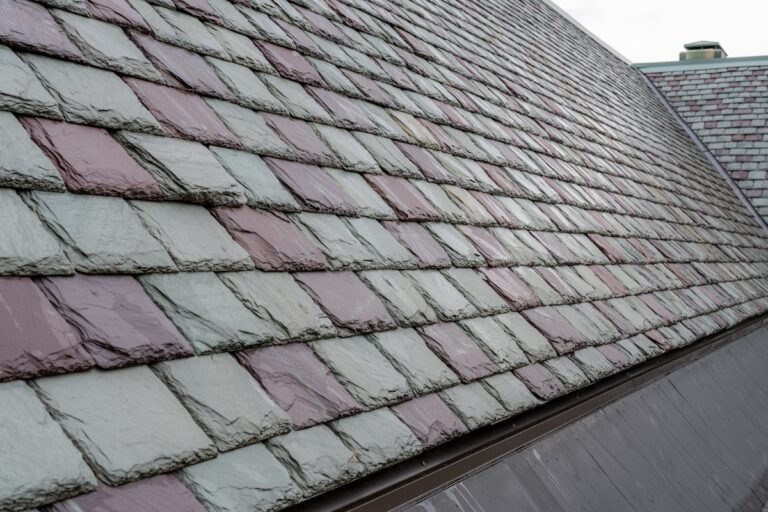When it comes to home renovation, choosing the right siding color can make all the difference. For homeowners, selecting the ideal hue isn’t just about aesthetics—it’s about long-term durability, maintenance, and even the potential return on investment.
This guide will walk you through everything you need to know about vinyl siding colors, from:
- The benefits and drawbacks of vinyl siding
- The best colors
- How to match them to your roof
Let’s get started on making your home stunning and resilient.

🤔 Why Choose Vinyl Siding?
Vinyl siding is a hugely popular choice for homeowners…and with good reason!
Pros of Vinyl Siding
- Durability: Vinyl siding is known for its ability to withstand harsh weather conditions, from high winds to heavy rain. It doesn’t rot or warp and is resistant to pests like termites.
- Low Maintenance: Unlike wood siding, vinyl does not require regular painting or staining. A simple wash with a garden hose can keep it looking fresh.
- Cost-Effective: Vinyl siding is generally less expensive than other siding options like wood or brick. This affordability makes it an attractive option for many homeowners.
- Versatility: Available in a wide variety of textures and colors, vinyl siding can mimic the look of wood, stone, and other materials, providing versatility in design.
- Energy Efficiency: Some types of vinyl siding come with added insulation, which can help reduce heating and cooling costs.
Cons of Vinyl Siding
- Fading: Over time, vinyl siding can fade due to prolonged exposure to sunlight. While modern advancements have minimized this issue, it’s still something to consider.
- Cracking: In extremely cold weather, vinyl can become brittle and crack.
- Limited Color Change: Once installed, changing the color of vinyl siding is not as easy as repainting wood siding. You’re generally stuck with the color you’ve chosen unless you replace it entirely.
- Environmental Impact: Although vinyl siding is durable, it is made from polyvinyl chloride (PVC), which is not biodegradable and has raised environmental concerns.
❗️ Why the Color You Choose Matters
Choosing the right color for your vinyl siding is crucial for several reasons:
- Curb Appeal: Your home’s exterior is the first thing visitors and potential buyers see. A well-chosen color can enhance your home’s curb appeal and even boost its market value.
- Mood and Feel: Colors have psychological effects. Light colors can make a home feel larger and more inviting, while darker colors can give it a more stately and historic feel.
- Climate Considerations: Lighter colors reflect heat and can keep your home cooler, while darker colors absorb heat and can help keep it warmer.
- Neighborhood Harmony: Consider the color schemes of nearby homes. While you want your home to stand out, it shouldn’t clash with the neighborhood aesthetic.
🏡 Top 6 Vinyl Siding Colors
Choosing the right color can be overwhelming given the vast array of options available. Here are some of the top vinyl siding colors that have gained popularity among homeowners:
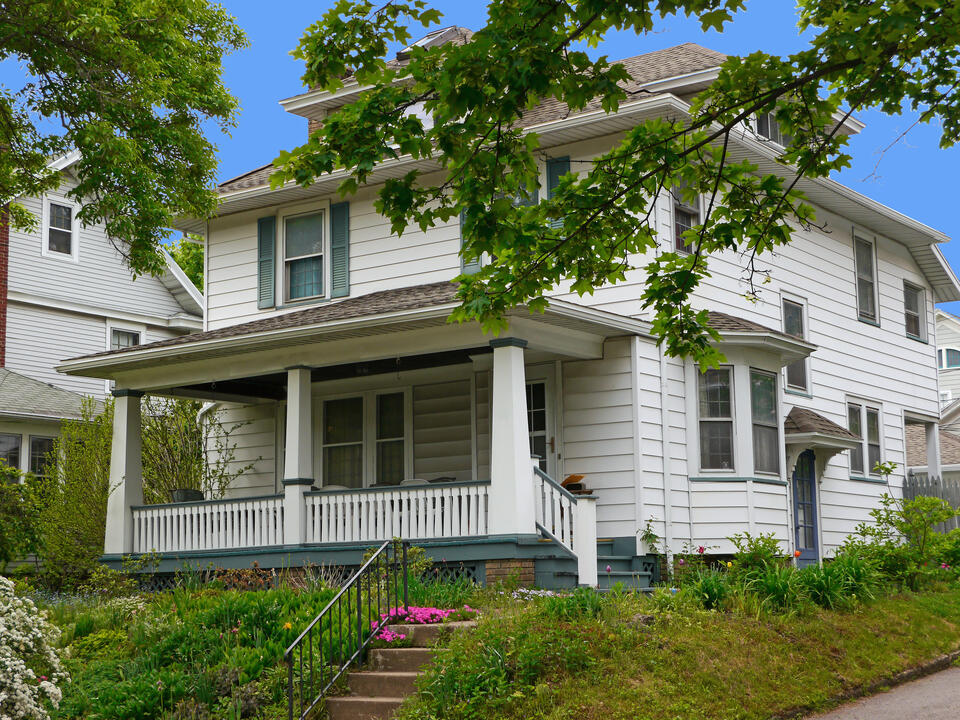
1) Classic White
Classic White is a timeless choice for vinyl siding, offering a clean and crisp look that never goes out of style. Its versatility allows it to complement any architectural design, from traditional to modern homes. This bright, neutral shade enhances curb appeal while reflecting sunlight, keeping your home cooler in warmer months. Classic White pairs beautifully with bold accent colors, making it easy to customize your exterior’s look. For a fresh and elegant finish, Classic White is always a smart option.
Pros:
- Timeless and versatile
- Works well with almost any trim color and style
- Reflects heat, keeping the home cooler in summer
Cons:
- Shows dirt more easily
- May look too plain without contrasting trim or accents
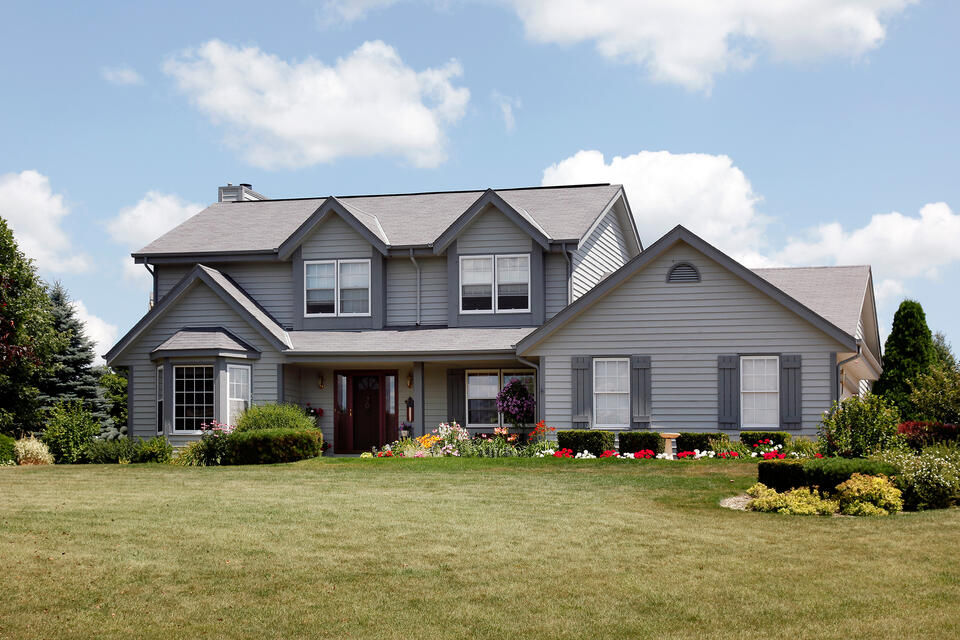
2) Gray
Gray is a versatile and timeless color choice for vinyl siding. It complements a wide range of architectural styles, from modern to traditional. With its neutral tone, gray pairs well with bold accents like navy blue or bright white for a striking contrast. It also offers a clean, sophisticated look that enhances curb appeal. Whether you prefer a light, airy gray or a deeper, more dramatic shade, this color brings elegance and durability to your home’s exterior.
Pros:
- Modern and trendy
- Complements both light and dark trim colors
- Hides dirt better than white
Cons:
- Can appear dull if not accented properly
- Darker grays may absorb more heat
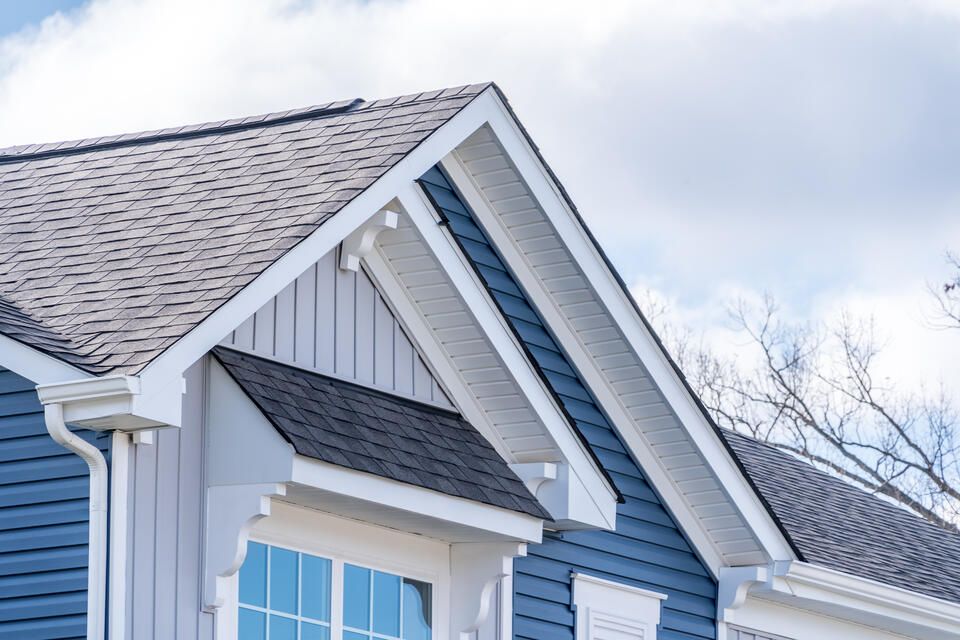
3) Blue
Blue is a timeless and versatile color that adds a sense of calm and sophistication to your home. It pairs beautifully with white or gray accents, creating a classic yet modern look. Lighter shades of blue can make your home feel airy and inviting, while deeper blues provide a bold, elegant statement. This color works well in a variety of styles, from coastal cottages to contemporary designs. Consider blue for a siding color that stands out while remaining effortlessly stylish.
Pros:
- Adds a pop of color without being too bold
- Stands out in neighborhoods with neutral palettes
- Looks great with white or gray trim
Cons:
- May not be suitable for all architectural styles
- Can fade over time if exposed to strong sunlight
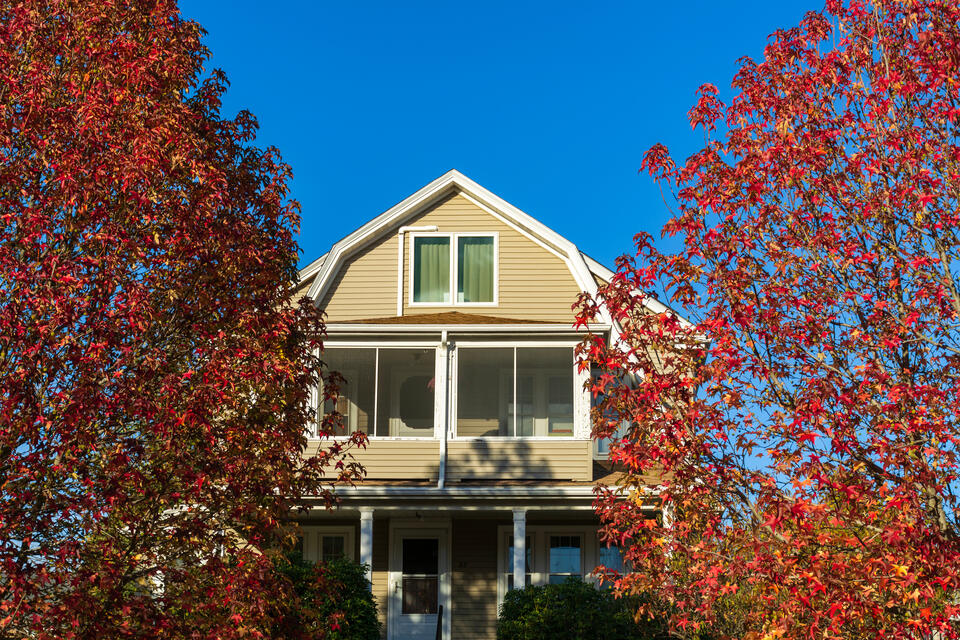
4) Beige/Tan
Beige or tan is a versatile and timeless choice for vinyl siding, offering a neutral tone that complements a wide range of architectural styles. This color provides a warm, welcoming appearance while blending seamlessly with natural surroundings. It pairs beautifully with darker trims like brown or black for a classic look or lighter accents like white for added contrast. Beige siding also tends to age well, maintaining its appeal over time with minimal upkeep. If you’re looking for a subtle yet elegant option, beige or tan is an excellent choice.
Pros:
- Neutral and blends well with natural landscapes
- Offers a warm and welcoming feel
- Works well with a variety of roof colors
Cons:
- Can appear bland without contrasting elements
- Not as eye-catching as bolder colors
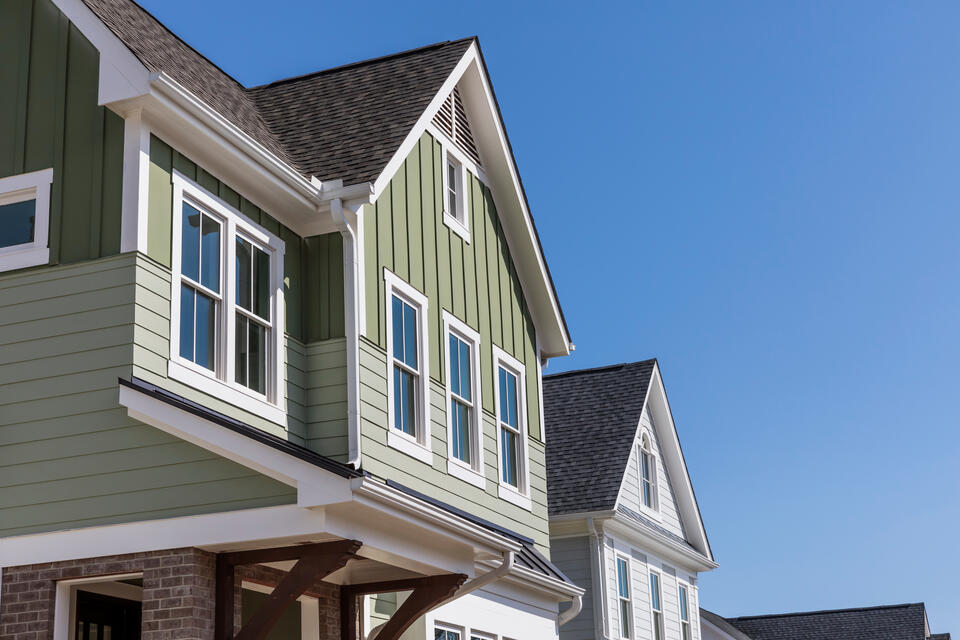
5) Green
Green is a versatile and timeless choice for vinyl siding, offering a natural and calming aesthetic. It blends beautifully with outdoor landscapes, making it ideal for homes surrounded by trees or gardens. From soft sage to deep forest shades, green can complement a wide range of architectural styles. Plus, it pairs well with neutral accents like white or beige for a clean, elegant look. Consider green if you want a color that feels refreshing and connected to nature.
Pros:
- Earthy and natural
- Complements wooded or garden settings
- Pairs well with brown or tan trim
Cons:
- May not be suitable for urban settings
- Limited appeal for resale in some markets
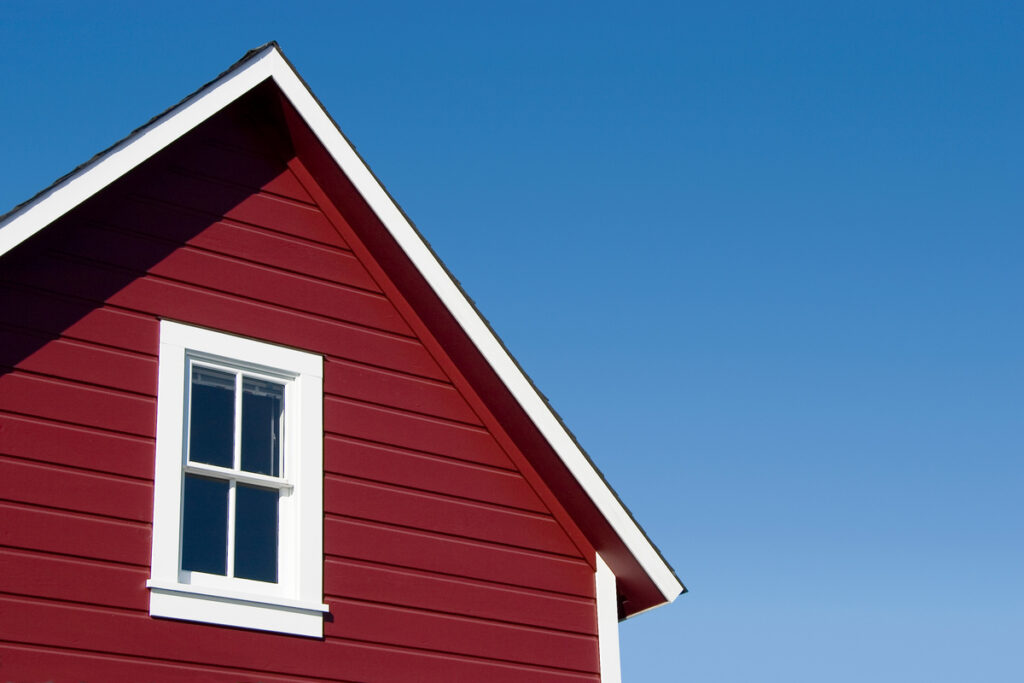
6) Red
Red is a bold and timeless color choice for vinyl siding, adding instant curb appeal to any home. It conveys warmth, energy, and a sense of tradition, making it ideal for both modern and classic architectural styles. Whether paired with white trim for a crisp, clean look or dark accents for dramatic contrast, red siding stands out in any neighborhood. This vibrant hue can also complement natural surroundings, blending beautifully with greenery or autumn landscapes. If you’re looking to make a statement, red might be the perfect choice for your home exterior.
Pros:
- Bold and distinctive
- Creates a classic look, especially with colonial-style homes
- Pairs well with white or black trim
Cons:
- May be too bold for some homeowners
- Can fade more noticeably than other colors
👉 How to Match Your Siding to Your Roof
Matching your vinyl siding to your roof is essential for a cohesive look. Here are some tips:
Consider Roof Color
- Light Roof: If your roof is light-colored, you have more flexibility in choosing a bold or subdued siding color. Light roofs pair well with almost any color.
- Dark Roof: Dark roofs pair best with lighter siding colors like white, beige, or light gray to create a balanced contrast.
- Colored Roof: If your roof has a specific color (like green or red), choose a siding color that complements it rather than clashes.
Harmonize with Trim and Accents
Your trim, shutters, and doors should also complement both your siding and roof. For example, if you have a dark gray roof and white siding, consider black or gray trim for a sophisticated look.
Use Color Tools
Many paint and siding companies offer online tools to help visualize how different color combinations will look on your home. These tools can be invaluable in making your final decision.
🏠 How to Take Care of Your Vinyl Siding
Proper maintenance can extend the lifespan of your vinyl siding and keep it looking great. Here’s how to take care of it:
Regular Cleaning
- Frequency: Clean your siding at least once a year.
- Method: Use a garden hose and a mild detergent. For tougher stains, a soft-bristle brush can be used. Avoid using high-pressure washers as they can damage the siding.
- Areas to Focus On: Pay special attention to areas under eaves and gutters, where dirt and mildew can accumulate.
Inspect for Damage
- Frequency: Perform a thorough inspection at least twice a year.
- What to Look For: Check for cracks, loose panels, or signs of moisture damage. Address any issues promptly to prevent further damage.
Protect from Heat
- Grill Placement: Keep grills and other heat sources away from the siding to prevent warping.
- Reflective Objects: Be mindful of reflective objects like mirrors or glass that can concentrate sunlight and cause heat damage.
Repainting
While vinyl siding is low-maintenance, it can be repainted if you want to refresh its appearance. Use a paint specifically formulated for vinyl to ensure proper adhesion and durability.
💸 How Much Will It Cost to Install Vinyl Siding?
The cost of installing vinyl siding can vary widely based on several factors:
Factors Affecting Cost
- Home Size: Larger homes require more materials and labor, increasing the overall cost.
- Siding Quality: Higher-quality siding with better insulation and durability will cost more upfront but can save money in the long run.
- Labor Costs: Labor costs can vary by region and the complexity of the installation.
- Additional Features: Features like insulation, trim, and decorative elements can add to the total cost.
Average Cost
- Per Square Foot: On average, vinyl siding costs between $2 and $7 per square foot, including materials and labor.
- Total Cost: For a typical 2,000 square foot home, the total installation cost can range from $4,000 to $14,000.
Cost-Saving Tips
- Get Multiple Quotes: Obtain quotes from several contractors to ensure you get the best price.
- Off-Season Installation: Consider scheduling the installation during the off-season when contractors may offer discounts.
- DIY: If you have the skills and tools, installing the siding yourself can save on labor costs. However, be aware that improper installation can void warranties and lead to costly repairs.
🙌 Work With Your Local Siding Pros!
Choosing the right vinyl siding color is a critical decision that impacts your home’s appearance, value, and maintenance.
Ready to take the next step in your home improvement journey? Contact our team of experts today to discuss your vinyl siding options and get personalized recommendations tailored to your home’s unique needs. Your dream home exterior is just a few clicks away!
